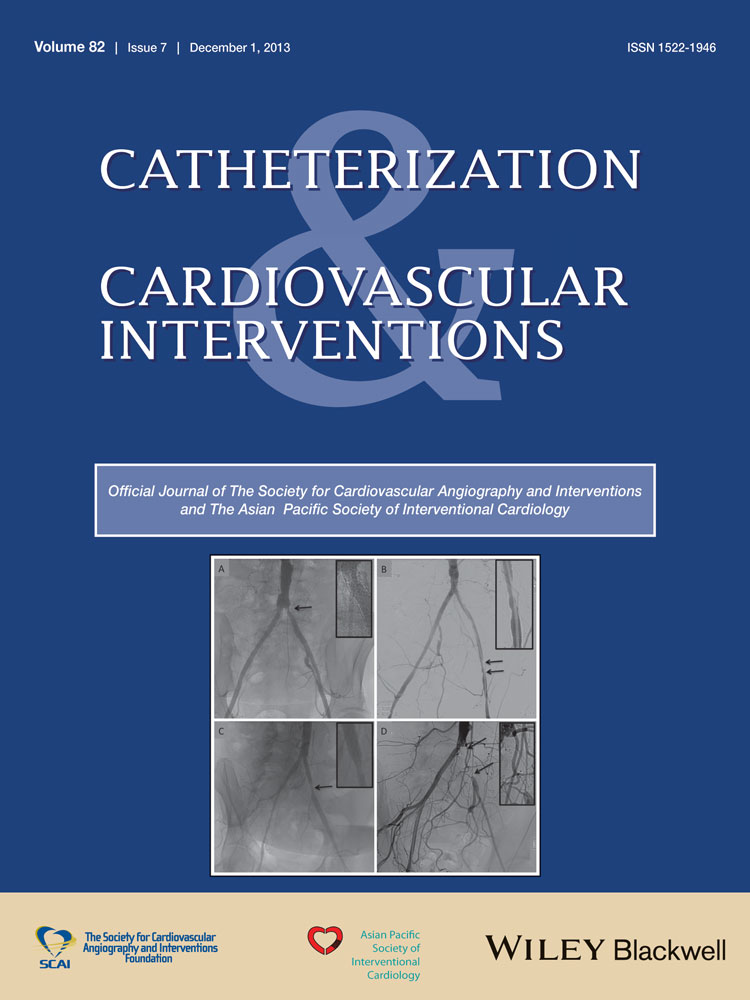Delivering stents in congenital heart disease using the double-wire technique: Technical considerations
Conflict of interest: Nothing to report.
Abstract
Objectives
To evaluate the use of a double-wire technique to deliver stents.
Background
Placement of a stent in lesions close to bifurcations or without an anatomic obstruction can be problematic.
Patients and Methods
Stents were implanted in 12 patients between August 2010 and August 2012. Indications were complex anatomic obstruction in nine, external compression of pulmonary veins in two, and exclusion of an aortic aneurysm in one patient.
Results
Median age and body weight of the group were 11.6 years (range: 1.6–34.8) and 36 kg (range: 10–78), respectively. All stents were delivered safely and the patency of all side vessels was maintained; the distal end of the stent was flared to a median ratio of 1.4 (range: 1.2–1.8). The clinical objective was met in all patients: in lesions with stenosis, diameter increased from 5.9 mm (range: 1–13) to 9.9 mm (range: 8–17) [P < 0.01; 95% confidence interval (CI): 2.0–7.2]; oxygen saturations improved in the 2 patients after relief of the external pulmonary venous compression and in another an aortic aneurysm was excluded. One patient developed a hemothorax and one required blood transfusion for bleeding from the valve of the sheath.
Conclusions
The double-wire stenting technique is effective to accurately deliver and anchor stents into lesions close to side branches and bifurcations. Side branch patency is maintained; the clinical objective (gradient relief, aneurysm exclusion, relief of external compression) can safely be reached. Technique and balloon selection should be based on the underlying anatomical substrate. © 2013 Wiley Periodicals, Inc.




